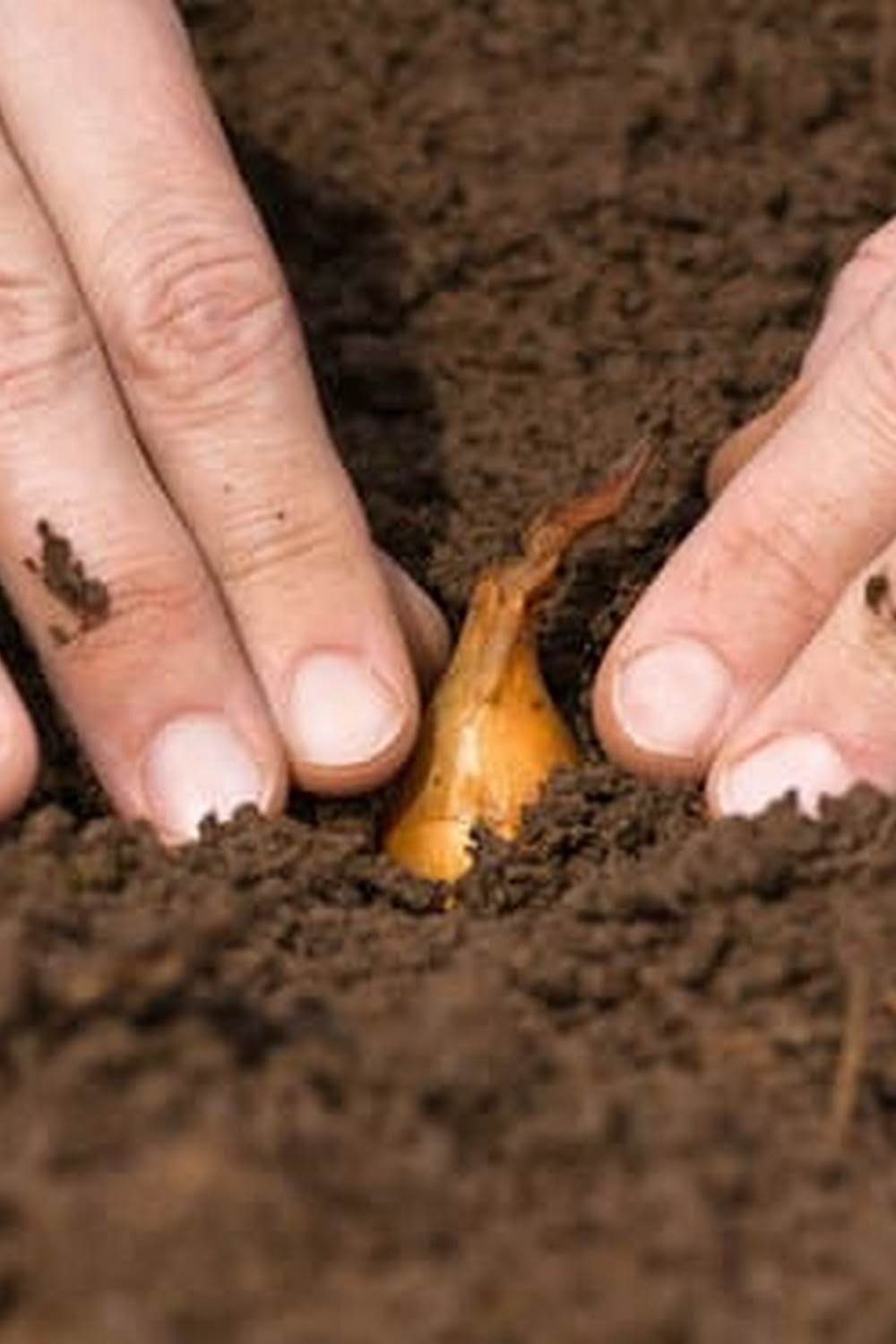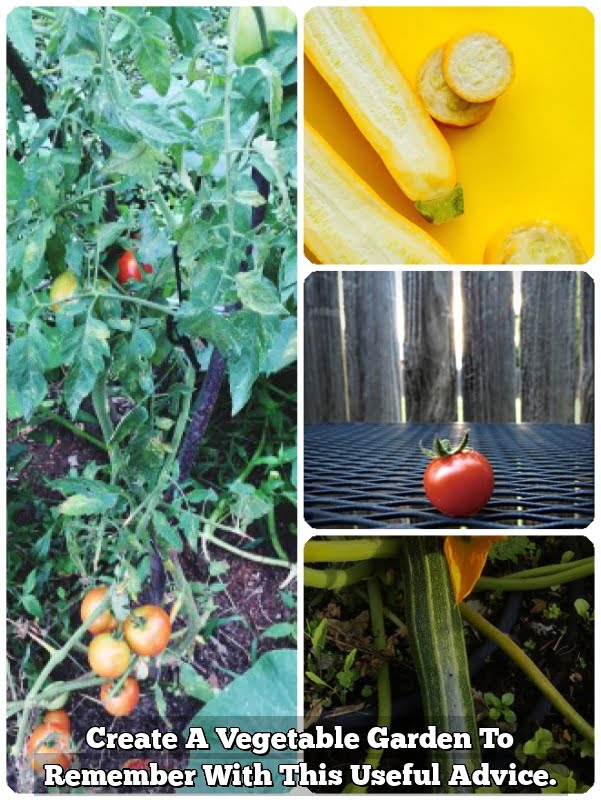Are you looking to learn how to create successful soil for your vegetable garden? The key to a thriving vegetable garden lies in the quality of the soil it is grown in. In this article, we will explore the essential components and practices for creating and maintaining healthy soil that will support abundant growth and bountiful harvests.
Good soil is the foundation of a productive vegetable garden. It provides the necessary nutrients, water retention, and root support for plants to grow strong and healthy. Understanding the importance of good soil is crucial for any gardener looking to cultivate a successful vegetable garden.
First, we will delve into the process of assessing your soil by understanding its type and characteristics. This knowledge is essential for identifying any deficiencies or imbalances that may need to be addressed in order to create optimal growing conditions for your vegetables. Additionally, we will explore the essential components of healthy soil, including organic matter, nutrients, and pH balance. Understanding these elements will enable you to make informed decisions about improving and maintaining your soil’s health.
Next, we will discuss various methods for building and enriching your soil, such as composting, mulching, and incorporating amendments. These techniques are essential for providing your vegetables with the necessary nutrients and organic matter for robust growth. We will also cover effective soil management practices such as crop rotation, cover crops, and no-till gardening to promote long-term soil health.
Join us on this journey as we uncover the key principles for creating successful soil that will nourish and support your vegetable garden throughout each growing season.
Assessing Your Soil
When it comes to creating a successful vegetable garden, knowing your soil type and its characteristics is essential. Different types of soil have different properties that can affect the growth and health of your vegetable plants. Here are some key steps to help you assess your soil:
- Conduct a simple soil texture test: You can do this by taking a handful of moist soil and squeezing it in your hand. If it forms into a tight ball, it is clay soil; if it falls apart easily, it is sandy soil; and if it holds together but crumbles slightly, it is loamy soil.
- Use a pH test kit: Testing the pH level of your soil is important because it determines the availability of nutrients to your plants. Most vegetables prefer a slightly acidic to neutral pH level, around 6.0-7.0.
- Observe water drainage: The drainage rate of your soil can also indicate its type. Sandy soils drain quickly, while clay soils drain slowly and may become waterlogged.
Once you have determined the type of soil you have in your garden, you can then identify its characteristics and make informed decisions about how to improve it for optimal vegetable growth. Understanding these factors will help you create the best possible environment for your vegetable plants to thrive.
The Essential Components of Healthy Soil
Healthy soil is the foundation for a successful vegetable garden, and understanding its essential components is crucial for creating thriving plants. The three key elements of healthy soil are organic matter, nutrients, and pH balance.
Organic matter plays a vital role in maintaining soil structure and fertility. It improves the soil’s ability to retain moisture and provides essential nutrients for plant growth. Some common sources of organic matter include compost, manure, and plant residues. Incorporating these into the soil can significantly improve its quality.
In addition to organic matter, ensuring that your soil has the right balance of nutrients is essential for the health of your vegetable garden. Nutrients such as nitrogen, phosphorus, and potassium are crucial for plant growth and development. Conducting a soil test can help determine if any specific nutrients are lacking and guide you in selecting the appropriate fertilizers or amendments to address any deficiencies.
Maintaining the proper pH balance in your soil is also critical for the overall health of your vegetable garden. Different plants have different pH preferences, so it’s important to test your soil’s pH level and make adjustments if necessary. Adding lime to raise the pH or sulfur to lower it can help create an optimal growing environment for your chosen vegetables.
Creating healthy soil with adequate organic matter, balanced nutrients, and proper pH levels sets the stage for bountiful harvests in your vegetable garden. By understanding and addressing these essential components, you can ensure that your plants have everything they need to thrive.
- Include organic matter such as compost, manure, and plant residues
- Conduct a soil test to assess nutrient levels
- Adjust pH levels using lime or sulfur based on plant preferences
Building Your Soil
One of the key components of creating successful soil for vegetable gardens is the process of building the soil. This involves improving the soil structure, fertility, and overall health through various methods such as composting, mulching, and incorporating soil amendments. These practices are essential for providing the necessary nutrients and environment for optimal plant growth.
Composting is a natural process that involves decomposing organic materials to create nutrient-rich humus. This can be achieved by collecting kitchen scraps, yard waste, and other organic materials in a compost bin or pile. The resulting compost can then be added to the garden soil to improve its texture and provide essential nutrients for plant growth. Not only does compost enrich the soil, but it also helps with moisture retention and promotes beneficial microbial activity.
Mulching is another important practice for building healthy soil. Applying a layer of organic mulch such as straw, wood chips, or leaves to the soil surface helps conserve moisture, suppress weed growth, regulate soil temperature, and prevent erosion. Over time, the mulch breaks down and adds valuable organic matter to the soil. Additionally, certain types of mulch can alter the pH level of the soil as they decompose, which can be beneficial for specific types of vegetables.
Incorporating soil amendments such as lime, bone meal, or sulfur is crucial for addressing any nutrient deficiencies in the soil. Conducting a soil test will help determine which specific amendments are needed based on your soil’s characteristics and the types of vegetables you plan to grow. Amending the soil with these supplements will ensure that it has adequate levels of essential nutrients such as nitrogen, phosphorus, potassium, calcium, magnesium, and others necessary for healthy plant development.
| Soil Building Practice | Benefit |
|---|---|
| Composting | Improves texture and provides nutrients |
| Mulching | Conserves moisture, regulates temperature |
| Incorporating Amendments | Adds essential nutrients based on needs |
Choosing the Right Vegetables for Your Soil Type
When it comes to choosing the right vegetables for your soil type, it is important to consider the specific needs of each plant and how they align with the characteristics of your soil. Different vegetables thrive in different soil conditions, so it’s important to know what type of soil you have in order to make the best choices for your garden.
Understanding Your Soil Type
Before deciding which vegetables to plant, it is essential to understand your soil type. Whether you have sandy, loamy, or clay soil will greatly impact which vegetables will do well in your garden. Sandy soil drains quickly but may require more frequent watering, while clay soil retains moisture but may need additional amendments to improve drainage. Understanding these characteristics will help you make informed decisions about which vegetables are best suited for your specific soil type.
Matching Vegetables to Soil Type
Once you have assessed your soil type, you can match it with vegetables that are known to thrive in those conditions. For example, root crops such as carrots and potatoes tend to do well in loose, sandy soils with good drainage. On the other hand, leafy greens like lettuce and spinach prefer rich, loamy soils with plenty of organic matter. Understanding these preferences will help you select the right vegetables for your specific soil type.
Amending Your Soil
If you find that your soil is not ideal for the vegetables you want to grow, there are ways to amend it to create a better environment for those plants. Adding organic matter such as compost or aged manure can help improve drainage and increase nutrient levels in sandy soils.
Similarly, incorporating sand and compost can help loosen heavy clay soils and improve their structure. By amending your soil based on its characteristics and the needs of the vegetables you want to grow, you can create an optimal growing environment for a successful vegetable garden.
Implementing Effective Soil Management Practices
Crop Rotation
Crop rotation is a vital practice to maintain soil health and productivity in vegetable gardens. By rotating the types of vegetables planted in different areas of your garden each year, you can help prevent the depletion of specific nutrients from the soil.
Additionally, crop rotation can also help reduce the buildup of pests and diseases that are specific to certain plant families. For example, rotating nightshades (tomatoes, peppers, eggplants) with members of the brassica family (cabbage, broccoli, kale) can help prevent disease problems.
Cover Crops
Using cover crops in your vegetable garden is an excellent way to improve soil structure, add organic matter, and suppress weeds. Cover crops such as clover, buckwheat, and annual ryegrass can be planted during fallow periods or over winter to protect the soil from erosion and nutrient loss. When these cover crops are turned into the soil before planting vegetables, they contribute essential nutrients, improve soil aeration and drainage, and enhance beneficial microbial activity.
No-Till Gardening
No-till gardening is a method that avoids disturbing the soil through tillage or digging. This practice helps maintain the natural structure and composition of the soil while promoting better water retention and reducing erosion. By minimizing disturbance to beneficial organisms living in the soil, no-till gardening supports healthy biological activity essential for plant growth.
This method also helps build stable aggregates within the soil, which improves its overall health and fertility over time. Incorporating no-till techniques into your vegetable garden can lead to better yields and long-term sustainability of your soil.
By implementing these effective soil management practices – crop rotation, cover crops, and no-till gardening – you can greatly improve the health and productivity of your vegetable garden’s soil. These methods provide long-term benefits by preserving essential nutrients in the soil while promoting optimal conditions for plant growth.
Tips for Maintaining Soil Health
Maintaining the health of your soil is crucial in ensuring a successful vegetable garden. One of the key aspects of maintaining soil health is proper watering. Overwatering can lead to waterlogged soil, which deprives plant roots of oxygen and can encourage the growth of harmful pathogens.
On the other hand, underwatering can lead to dry and compacted soil, making it difficult for plants to access nutrients. To maintain the optimal moisture level in your soil, it is important to water deeply and infrequently, allowing the water to penetrate deep into the soil.
Weeding is another important aspect of maintaining soil health. Weeds compete with vegetable plants for water, nutrients, and sunlight. They can also serve as hosts for pests and diseases that can affect your vegetable garden. Regularly removing weeds by hand or using mulch can help prevent them from taking over your garden and negatively impacting your soil’s health.
Pest management is essential for maintaining the health of your soil as well as the overall success of your vegetable garden. Pests such as aphids, caterpillars, and beetles can damage plants and weaken their ability to take up nutrients from the soil. Implementing integrated pest management practices such as introducing beneficial insects, using physical barriers, and practicing crop rotation can help control pest populations without harming the health of your soil.
By following these tips for maintaining soil health through proper watering, effective weeding, and pest management practices, you can ensure that your vegetable garden thrives in healthy and nutrient-rich soil.
| Aspect | Tips |
|---|---|
| Watering | Water deeply and infrequently to avoid waterlogging or dry, compacted soil. |
| Weeding | Regularly remove weeds by hand or use mulch to prevent them from competing with vegetable plants. |
| Pest Management | Implement integrated pest management practices such as introducing beneficial insects and using physical barriers. |
Troubleshooting Common Soil Problems and Solutions for Vegetable Gardens
Even with the best efforts in creating healthy soil for your vegetable garden, problems can still arise. One common problem is soil compaction, which occurs when the soil becomes too dense, making it difficult for plant roots to penetrate and access essential nutrients.
To solve this issue, consider aerating the soil by using a garden fork or aeration tool to loosen it up. Another solution is to incorporate organic matter such as compost into the soil, which can improve its structure and make it less prone to compaction.
Another frequent issue faced by gardeners is nutrient deficiencies in the soil, which can lead to stunted growth and poor yields. By conducting a soil test, you can identify which nutrients are lacking and take steps to address them. This may involve adding specific fertilizers or organic amendments that are rich in the deficient nutrients. Additionally, implementing crop rotation can help replenish depleted nutrients in the soil while reducing the risk of nutrient deficiencies in future plantings.
In some cases, vegetable gardens may be affected by diseases or pests that thrive in specific soil conditions. To combat these issues, consider practicing good sanitation by removing any diseased plant materials and rotating crops regularly to disrupt pest cycles.
Implementing natural pest control methods such as introducing beneficial insects or using companion planting techniques can also help manage pest problems without relying on harmful chemical solutions. By remaining vigilant and proactive in addressing common soil problems, you can ensure the long-term success of your vegetable garden.
Conclusion
In conclusion, creating and maintaining successful soil for your vegetable garden requires a thorough understanding of the importance of good soil, assessing your soil type and characteristics, and implementing effective soil management practices. By considering the essential components of healthy soil such as organic matter, nutrients, and pH balance, as well as building your soil through composting, mulching, and incorporating amendments, you can set the foundation for a thriving garden.
Additionally, choosing the right vegetables for your specific soil type and implementing techniques like crop rotation, cover crops, and no-till gardening can further enhance the health and productivity of your soil.
It is important to remember that maintaining soil health is an ongoing process. Regularly watering your garden, weeding diligently, and effectively managing pests are crucial for preserving the quality of your soil. By staying vigilant and proactive in addressing common soil problems such as compaction or nutrient deficiencies, you can prevent potential issues from escalating.
Overall, successful soil for vegetable gardens ultimately depends on adhering to these key principles: understanding your soil’s characteristics, providing essential components for healthy growth, choosing appropriate vegetables accordingly, implementing effective management practices, and consistently maintaining the health of your garden’s foundation – its soil. With dedication and attention to detail in these areas, you can create an environment where your vegetables will thrive.
Frequently Asked Questions
How Do I Make Good Soil for My Vegetable Garden?
Making good soil for your vegetable garden involves a combination of incorporating organic matter, balancing pH levels, and providing proper drainage. Start by testing your soil to understand its composition and make adjustments as needed.
Adding compost, aged manure, or other organic materials can improve the soil structure and provide essential nutrients for your vegetables. It’s also important to ensure that the soil is well-draining to prevent waterlogged conditions that can harm your plants.
How Do You Turn Bad Soil Into Good Soil?
Turning bad soil into good soil requires several steps to rehabilitate its quality. Start by testing the soil to identify any deficiencies or imbalances in nutrients and pH levels.
Incorporating organic matter such as compost, leaf mold, or manure can help improve the soil structure and increase its nutrient content. Additionally, using cover crops or green manure can help suppress weeds and build up organic material in depleted soils.
How Do You Make Rich Soil for Gardens?
Making rich soil for gardens involves enriching the existing soil with organic matter to improve its fertility and structure. This can be achieved by adding compost, aged manure, or other organic materials to enhance the nutrient content of the soil while promoting beneficial microbial activity.
Additionally, using mulch on top of the soil helps retain moisture, suppress weeds, and gradually break down to add more organic matter to the soil over time. By consistently adding organic materials and maintaining good gardening practices, you can create rich, productive soil for your garden.

If you’re looking to get into vegetable gardening, or are just looking for some tips on how to make your current garden better, then you’ve come to the right place! My name is Ethel and I have been gardening for years. In this blog, I’m going to share with you some of my best tips on how to create a successful vegetable garden.





